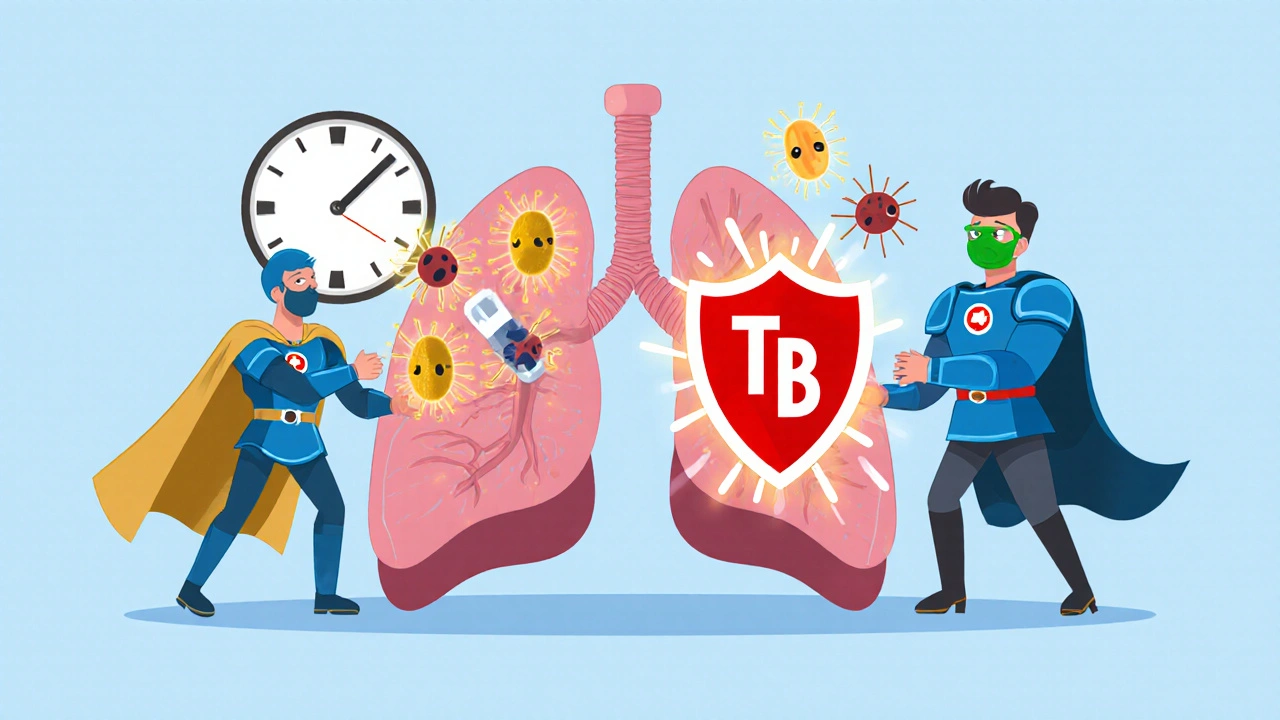When treating isoniazid, a first-line antibiotic used primarily to treat and prevent tuberculosis. Also known as INH, it’s one of the most common drugs used worldwide to stop TB from spreading. If you’ve been prescribed isoniazid, you’re likely dealing with latent TB infection or active disease—both serious conditions that need careful management. It’s not just a pill you take and forget. Isoniazid requires consistent daily use for months, and skipping doses can lead to drug-resistant TB, which is far harder and more expensive to treat.
What makes isoniazid tricky is how it interacts with your body. It’s processed by your liver, so liver toxicity, a known risk when taking isoniazid long-term is something your doctor will monitor. You might need blood tests every few weeks, especially if you’re over 35, drink alcohol, or already have liver issues. And while most people tolerate it fine, some get side effects like nausea, tingling in hands or feet, or even mood changes. These aren’t rare—they’re common enough that doctors routinely prescribe vitamin B6 (pyridoxine) alongside isoniazid to protect nerves.
Isoniazid doesn’t work alone. It’s almost always part of a combo therapy, paired with other anti-TB drugs, like rifampin, pyrazinamide, or ethambutol to kill different strains of the bacteria and prevent resistance. This multi-drug approach is why TB treatment takes at least six months, sometimes longer. You might wonder why you can’t just take one pill and be done. The answer is simple: TB bacteria are smart. They adapt. Using only isoniazid would let the toughest ones survive and multiply. That’s why sticking to the full course isn’t optional—it’s life-saving.
There’s also a big difference between treating active TB and preventing it. If you’ve been exposed to someone with TB but don’t have symptoms yet, isoniazid can stop the infection from turning active. That’s called latent TB treatment. It’s shorter—usually 6 to 9 months—but just as important. Millions of people worldwide take isoniazid this way every year, and it’s one of the main reasons TB rates have dropped in many countries.
What you won’t find in most brochures is how real people manage this treatment. Some take it at night to avoid nausea. Others set phone alarms. Some stop because they feel fine after a few weeks—and then get sick again. The posts below dive into exactly these real-life challenges: how to handle side effects, what to do if you miss a dose, how isoniazid compares with newer TB drugs, and why some people can’t take it at all. Whether you’re a patient, caregiver, or just trying to understand your prescription, this collection gives you the facts without the fluff—straight from medical experience, not marketing.

Isoniazid has long been the standard for TB treatment, but safer, shorter alternatives like rifampin and rifapentine are now preferred. Learn which options work best for active and latent TB-and when to avoid isoniazid.
read more